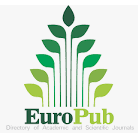Rooted Cutting of Gymnostoma Sumatranum for Land Reclamation in Degraded Ultramafic Forests in Sabah
Keywords:
Gymnostoma sumatranum, rooted cutting, nodulation, potting media, ultramafic forestsAbstract
Gymnostoma sumatranum, a member of the Casuarinaceae family, is a resilient tree species well-adapted to nutrient-deficient soils. In Sabah, it stands out among the three and widely distributed Casuarina species, holding promise for land reclamation initiatives in degraded ultramafic forests. This comprehensive study addresses three primary objectives for effective G. sumatranum propagation, 1) sprig selection for rooted cutting, 2) impact of commercial rooting hormones on growth and nodulation, and 3) identification of suitable potting media for seedling development. The results indicated that the middle-part sprig is preferable for rooted cutting, with a higher rooting percentage (75.9%) compared to the upper-part sprig (57.5%). Additionally, the use of Seradix-3 as a growth hormone treatment yields significant improvements in explant length and root production. However, variations in root nodulation, influenced by different treatments, suggested limitations in commercial rooting hormones, with only 31% of rooted explants exhibiting nodulation. This underscores the need for further research to comprehend factors influencing nodulation in this context. In terms of potting media, river sand (R-sand) emerges as the most effective for G. sumatranum seedling development in the nursery stage based on S-index (healthy seedlings = 31.5%) and growth index (Height = 51.14±14.82 mm; N-Branch = 51.14±14.82), emphasising the critical role of proper potting medium selection for optimal seedling growth and survival. The study also highlights previous restoration efforts by the Sabah Forestry Department, utilising G. sumatranum and other pioneer species to restore degraded ultramafic areas in Sabah. Overall, these results contribute to the long-term goal of restoring the functioning capacity of valuable ultramafic ecosystems and promoting sustainable reforestation practices.
Downloads
Published
Issue
Section
License
Copyright (c) 2024 Journal of Sustainable Natural Resources

This work is licensed under a Creative Commons Attribution-NonCommercial-ShareAlike 4.0 International License.











